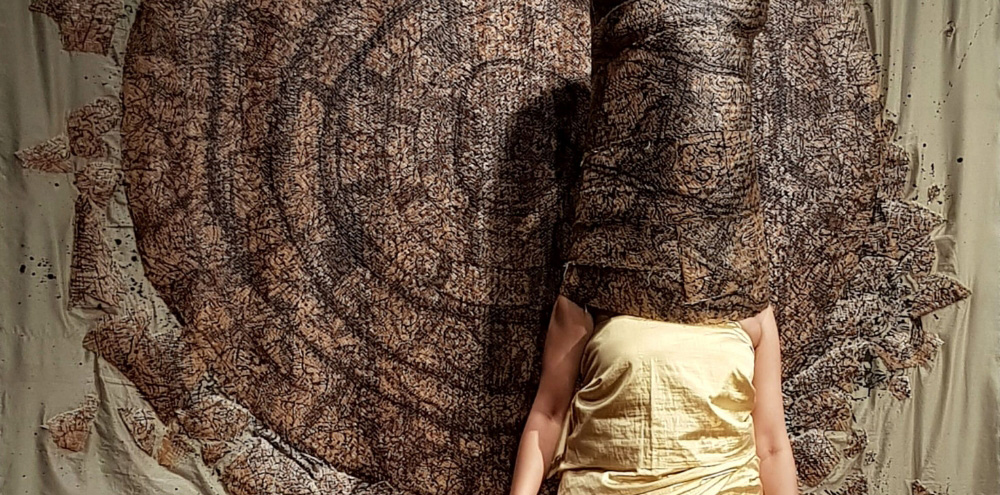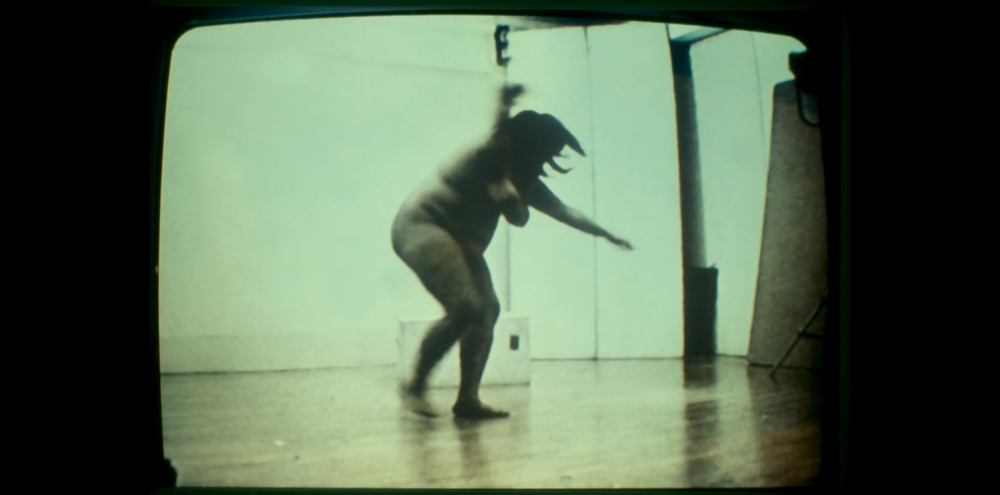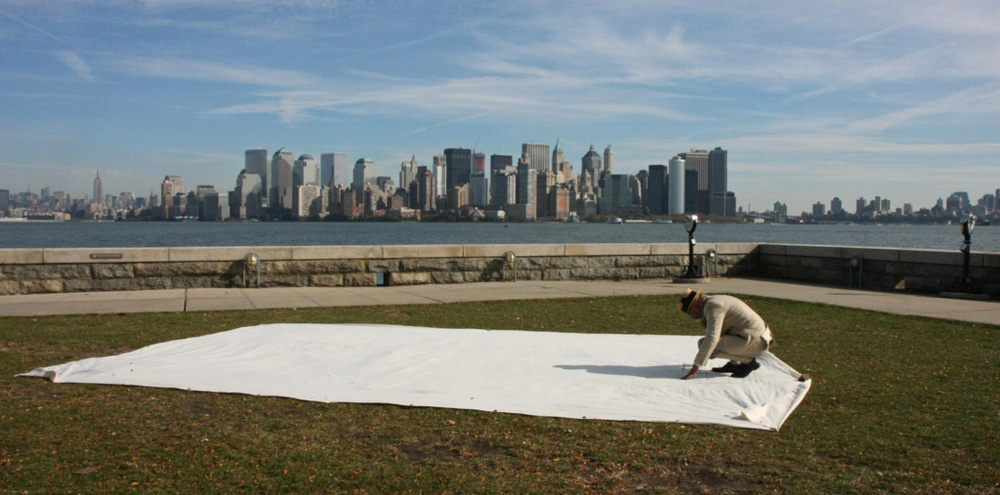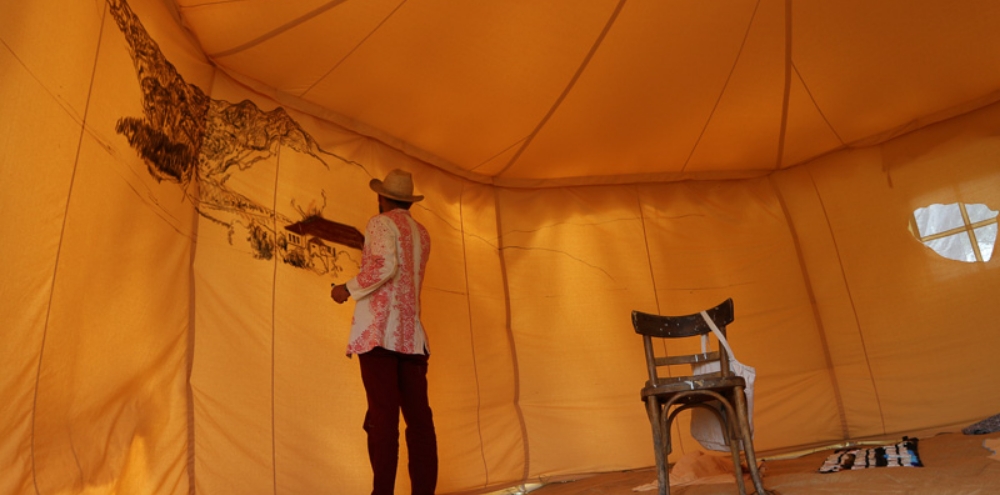Performance Art: Conversations with Body and Space
The rich history of performance art in India can be traced back to experimental artists’ projects in the 1970s and to the legacy of theatre and public street performance in the region. While dance, music and theatre practices traditionally follow fixed narrative structures, emphasise technique and rehearsals, and are designed for the stage, performance art radically rejects such disciplinary conventions. Performance artists explore new approaches to methods of dancing or acting, using these techniques to interact with bodies, spaces and audiences in pioneering ways to explore themes such as identity building, gender and politics. Through a range of such practices where the body and bodily experiences of the artist become the medium, performance art throws light on the absurdities of life; on fundamental human needs, desires and fears; and on contentious political questions in disturbing or even humorous ways. By placing concepts, rather than formal rules or values of artistic practice at its core, performance art challenges the ways in which we view, appreciate and think about art.
Performance art has grown in India since the 1990s. Its development was supported in part by the founding of Khoj International Artists’ Association in New Delhi in 1997. Khoj rapidly became an incubator of experimental and alternative art practices, including performance art. Let’s take a look at the work of two performance artists, Sonia Khurana (b. 1968) and Nikhil Chopra (b. 1974). Their explorations have moved across visual mediums like live performances, staged and documentary photography, videos and in the case of Chopra, the creation of ‘durational drawings’ during his performances.
Femininity and Social Critique: Sonia Khurana
Sonia Khurana’s performances examine themes of power, feminism, memory and interiority, alongside evocations of melancholy and solitude. Khurana was born in 1968 in Delhi, where she continues to live and work, and studied at the Royal College of Art in London. One of her earliest works that significantly impacted the field of performance art in India is Bird, which criticises the perception of femininity as fragile, and challenges norms of ideal standards of female beauty. Khurana performed and shot the video in London, but first presented it in Delhi in 1999.
The performance centres around the artist embodying a bird that has lost its ability but not its will to fly. Khurana stands nude on a pedestal on her tiptoes while trying to find her balance as she flaps her wings, takes off, and eventually falls to the ground. In its framing and use of a pedestal, the work alludes to and challenges the history of sculpture and the portrayal of the female body in art. Khurana’s attempts to fly are, of course, doomed and futile, creating an irreverent, subtly comical and slightly hysterical commentary. Bird was filmed on a Hi8 camcorder and processed during the early days of digital image production. While Khurana performed the work privately, it was presented to audiences as a video. Like many performance artists, Khurana’s art engages with lens-based practices for documentation and dissemination. While typically, works of performance art are deliberately set in more public spaces, Bird was likely enacted privately in light of how radical the work was in its presentation of Khurana’s body, deeming this choice necessary or preferable.
Subsequently, Khurana embarked on a series of public performances, such as Logic of Birds (watch here), in which she chose to lie down on the ground in public spaces. Khurana attributed this impulse to lie down to her recollections of a moment of loss in her life. The act also pointedly challenges social norms. Khurana performed Logic of Birds in Barcelona in 2006, though it has since been presented as a video and in photos, just like Bird. In a documentary photograph from Logic of Birds, we see pigeons gathering and moving around Khurana, who appears still. This marks an interesting counterpoint to and an extension of the earlier work in which the artist performed and moved metaphorically as a flightless bird.
Through her practice centering on her own body and by exploring the body in movement, stillness and in the nude, Khurana presents herself as an ’embodied subject’, offering a feminine and feminist social critique of issues like standards of beauty and objectification of the female body.
As we’ve seen through Khurana’s practice, performance artists employ bodily action to engage with diverse socio-political, cultural and historical themes. Let us turn to another such artist who moves between live performance and staged photographic performance, as he engages with themes of memory and history.
Performing Historical Memory: Nikhil Chopra
In the early and mid-2000s, after returning from graduate studies in art in the United States, Nikhil Chopra began to perform and stage portraits of himself as two characters, Sir Raja and Yog Raj Chitrakar, whose names became the titles of the series. Sir Raja embodied elements of early colonial photography — particularly staged formal portraiture with complex backdrops — and represented the double bind of being an Indian dignitary with local authority under British rule during the colonial period.
The character Yog Raj Chitrakar (watch here) evolved from Sir Raja and is based on the artist’s grandfather Yog Raj Chopra, an open-air landscape painter. Chopra performs live as Chitrakar (whose name also translates to picture maker), journeying through various regions, and engaging with people and landscapes in silent dialogue. For instance, in the series titled Memory Drawing (2007 onwards), Chopra enacts the role of Chitrakar travelling through market squares, forgotten old buildings, city streets museums and galleries. In the process, he also portrays everyday actions such as washing, eating, dressing, sleeping and shaving, among other staged spectacles. In these travels, Chitrakar makes large-scale charcoal drawings which capture impressions of cityscapes that seem timeless or temporally ambiguous. Having successfully transferred his impressions onto canvas or in sketchbooks, Chitrakar’s journey leads him ‘home’, where these reflections are displayed. Such performances that stretch across long periods of time, where time itself becomes a medium and a site for artistic expression, are called durational drawings.
Over time, Chopra’s project, and physical journeys and character transformations became more ambitious, using autobiography, history and memory as inspirations for his characters. In 2017, for Documenta, an important contemporary art exhibition held every five years in Kassel, Germany, Chopra performed Drawing a Line through Landscape. He went on a 3,000-kilometre road trip from the exhibition’s extension in Athens, Greece, to its home venue of Kassel. In Kassel, Chopra presented a large-scale drawing on canvas depicting what he saw en-route. This was effectively a montage of detailed landscapes, ranging from mountainous terrain to urban areas. It also doubled as a tent that Chopra slept in, referring to issues of migration and nomadism in a region of Europe that had experienced significant geo-political shifts in the previous generation.
Chopra’s work explores key aspects of identity, including gender and class, which are woven into elaborate costumes and rituals around everyday life, such as meals eaten during performances. While his work is independent, it is also collaborative, involving audiences, photographers and costumiers who are artists in their own right. In this way, Chopra’s practice lends well to the transition to the rise of artists collectives in India, which we will explore in our next Topic.
Although some performance artists such as Khurana work with lens-based mediums, or as in Chopra’s practice, performatively create tangible visual material like painting or sculpture, their performances remain ephemeral. The live and momentary experience of watching or participating in a work of performance art is almost impossible to replicate. The irreproducible nature of this medium sets it apart from other forms of contemporary art, given the way in which it can engage with and involve audiences in unconventional ways.
In addition to Khurana and Chopra, a host of artists have explored performance art in the past two decades to address issues ranging from the personal, as seen in Mithu Sen’s (b. 1971) practice, to political concerns such as pollution and climate change, like in works by Ravi Agarwal (b. 1958) and Atul Bhalla (b. 1964).
In this Topic we focus on artists who took to the medium of performance. You know the drill! If you wish to read more about them or the institutions that support them, take a look at the following articles.
Further Readings
















